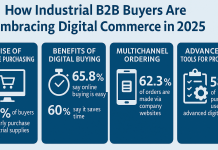It’s a problem that every business faces: teams spend more time on routine activities than on strategic innovation that helps the firm develop. This issue is exacerbated in IT departments, as project delivery requirements increased by 40% in the last year alone.
The evolution of IT in a changing market
Gartner discovered in 2008 that 68% of IT teams’ time was spent keeping the lights on. MuleSoft research discovered that number has risen to 71% 13 years later, despite the fact that digital transformation has become critical to every organization’s success.
The term “digital-first, cloud-first, mobile-first” has become a business buzzword that has been heard on hundreds of earnings calls over the last decade. Companies, on the other hand, encountered several internal roadblocks to the promised land of “digital transformation,” such as a lack of alignment between business units and IT, aging systems, access to people, insufficient risk assessments, and segregated data systems. If it wasn’t enough, there was also a lack of urgency for a variety of reasons.
Consider “keeping the lights on” for your business.
What are your options? The solution is found in the same tools that IT is so comfortable with: technology. Automation, in particular, offers a forward-thinking solution to “keeping the lights on,” allowing employees to be more productive and effective at work by freeing up team members’ time to focus on the task at hand and innovating to keep up with the rapid pace of change.
Utilize integration for ongoing capacity-building.
According to MuleSoft’s Connectivity Benchmark Report, organizations now have an average of 976 discrete apps, an increase of 133 in the previous year. Nonetheless, just 28% are incorporated, a little reduction from the previous year.
New apps and experiences may be produced more rapidly by utilizing shared building pieces such as APIs that draw on other tools or data sources, making digital experiences better for the user without the legwork of creating from scratch. This relieves IT of tedious tactical integration.
Utilize innovation to drive post-crisis development.
Everything is achievable, as the pandemic demonstrated: converting in-person enterprises to a remote workforce overnight, generating vaccinations at breakneck speed, and completing full digital transformation in a matter of weeks or months. IT has enormous potential to address some of today’s most difficult business issues while also creating transformative experiences for both customers and employees. Leaders must use reusable automation and integration building blocks to free IT from the burden of keeping the lights on and involve the entire business in order to unleash tomorrow’s innovations — and they must do so quickly or risk falling behind.










